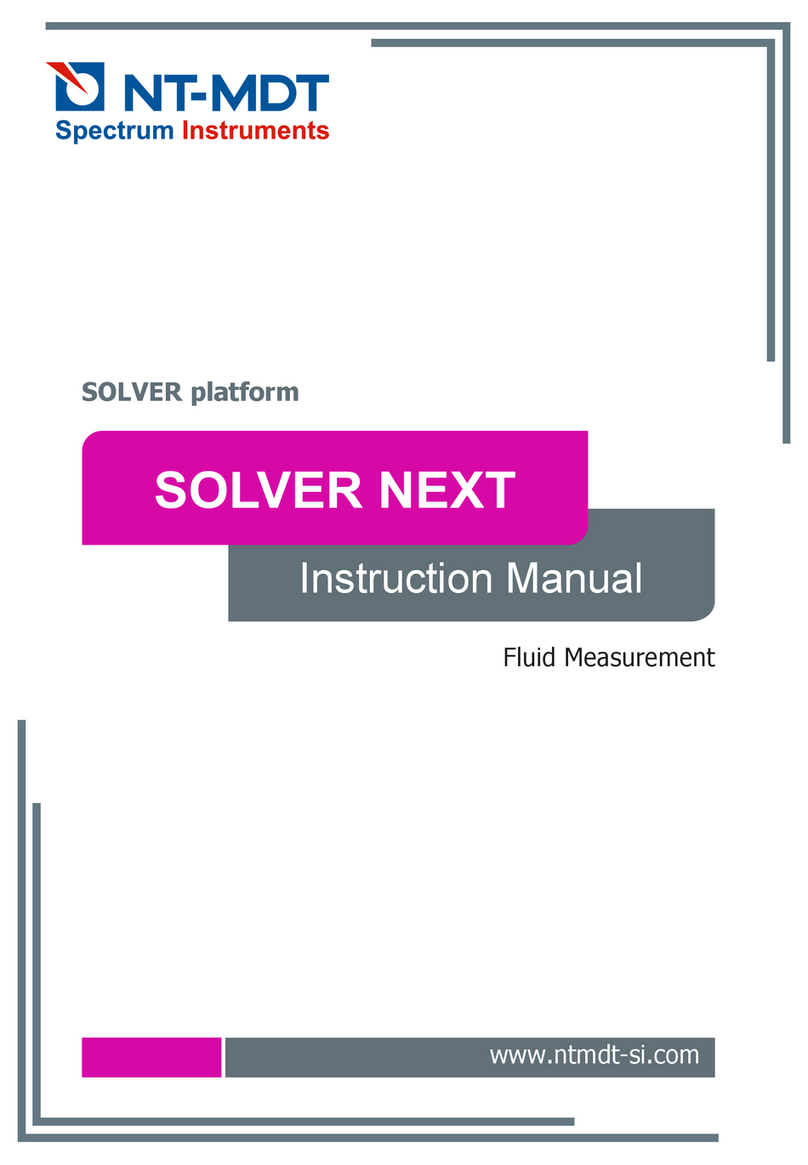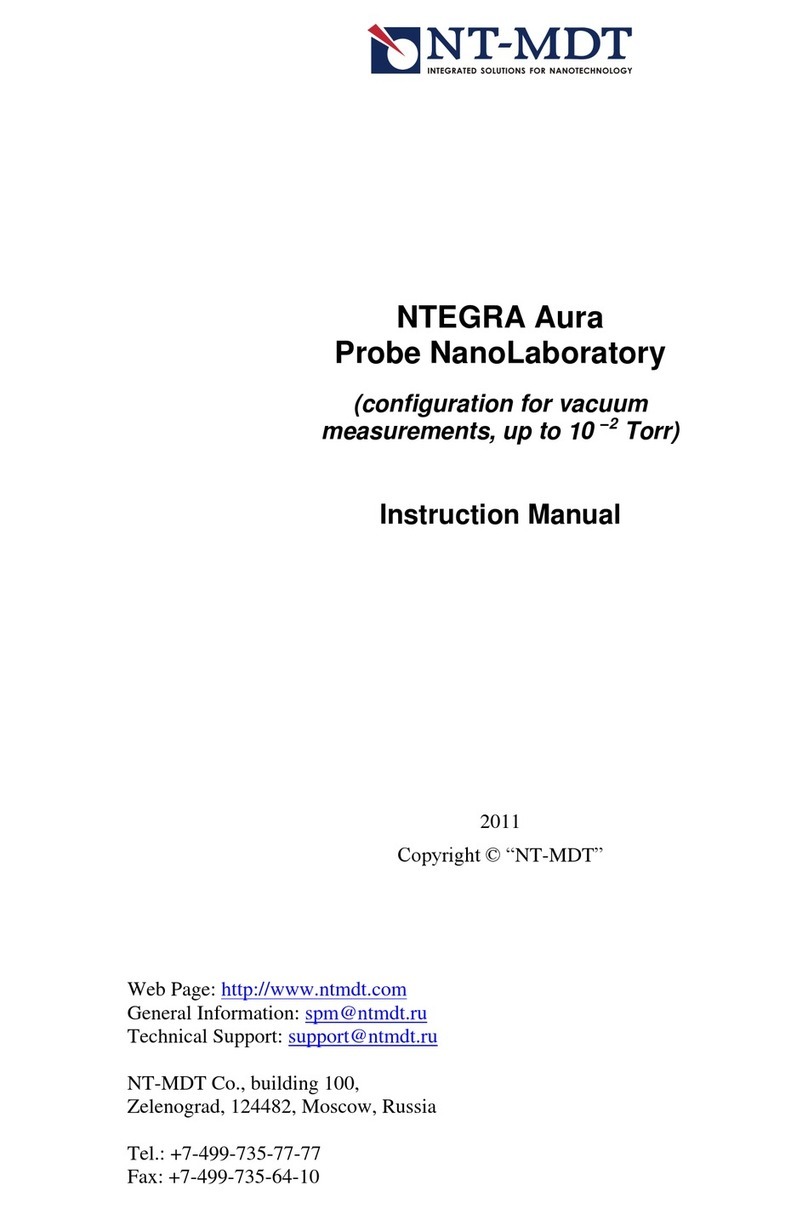
NTEGRA Spectra Probe NanoLaboratory. (Inverted Configuration with Solar TII spectrometer)
NTEGRA Spectra Probe NanoLaboratory. Inverted Configuration
with Solar TII spectrometer
Table of Contents
1. OVERVIEW .............................................................................................................................................5
2. DESIGN.....................................................................................................................................................7
2.1. INVERTED OPTICAL MICROSCOPE .................................................................................................... 8
2.2. NTEGRA BASE UNIT....................................................................................................................... 9
2.3. XY SCANNING OPTICAL EXCHANGEABLE MOUNT......................................................................... 10
2.4. MEASURING HEADS........................................................................................................................ 12
2.5. SPECTROMETER .............................................................................................................................. 16
2.6. DETECTORS .................................................................................................................................... 16
2.7. LASER............................................................................................................................................. 20
2.8. OPTICAL FIBER TRANSPORT SYSTEM ............................................................................................. 21
2.9. ADDITIONAL CABLES ..................................................................................................................... 22
2.10. CONTROLLERS................................................................................................................................23
2.11. COMPUTER ..................................................................................................................................... 24
3. PRINCIPLE OF OPERATION OF THE NTEGRA SPECTRA PNL..............................................25
4. BASIC SAFETY MEASURES..............................................................................................................28
5. OPERATING CONDITIONS...............................................................................................................31
6. STORAGE AND TRANSPORT REGULATION ...............................................................................33
7. GENERAL REQUIREMENTS ON INSTALLATION......................................................................34
8. SETUP AND INSTALLATION............................................................................................................35
8.1. PREPARING THE SPECTROMETER .................................................................................................... 35
8.1.1. Installing and Aligning the Optical Fiber Transport System........................................... 35
8.1.2. Installing the Spectrometer and the Optical Microscope ................................................ 38
8.2. CONNECTING THE ELECTROMECHANICAL UNITS............................................................................ 39
8.3. POWERING SEQUENCE .................................................................................................................... 41
9. PREPARING FOR OPERATION........................................................................................................44
9.1. LAUNCHING THE CONTROL PROGRAM............................................................................................ 44
9.2. VERIFYING ADJUSTMENT OF THE DISPLACEMENT SENSORS........................................................... 45
9.3. ADJUSTING THE SPECTRAL UNIT .................................................................................................... 46
9.4. MOUNTING THE SAMPLE ................................................................................................................ 50
10. MEASURING WITH THE CONFOCAL MICROSCOPY MODE..................................................51
10.1. FOCUSING THE LASER BEAM .......................................................................................................... 51
10.2. ADJUSTING CHANNELS OF DETECTION........................................................................................... 52
10.2.1. Adjusting Detection Parameters of the CCD-camera ..................................................... 52
10.2.2. Adjusting Detection Parameters of the PMT Module...................................................... 57
10.2.3. Adjusting Detection Parameters of the APD Module...................................................... 59
10.3. ADJUSTING SCAN PARAMETERS ..................................................................................................... 61
10.4. ADDITIONAL ADJUSTING FOR SCANNING WITH AFM HEAD ........................................................... 63
10.5. SCANNING ...................................................................................................................................... 68
10.5.1. Scanning with Recording by the CCD-Camera............................................................... 68
10.5.2. Scanning with Recording by the PMT Module ................................................................ 71
10.5.3. Scanning with Recording by the APD Module ................................................................ 72
10.6. SAVING DATA................................................................................................................................. 73
10.7. FINISHING THE WORK..................................................................................................................... 73
11. AFM AND SNOM MEASUREMENTS ...............................................................................................75





























